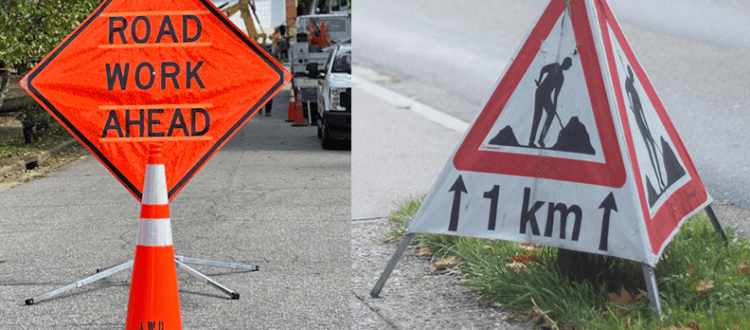Roll-up signs are a versatile and portable solution for displaying important information in various settings. These signs are designed to be easily rolled up for compact storage and convenient transportation, making them ideal for use in construction zones, roadwork, events, and other temporary situations where clear communication is crucial.
They are typically made from durable materials that can withstand outdoor conditions and provide high visibility, ensuring that important messages are communicated effectively to pedestrians, drivers, and other passersby. With their practical design and customizable options, roll-up signs offer a practical and efficient way to convey essential information in a wide range of environments.
What Material are Roll Up Signs Made of?
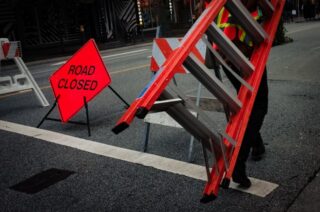 Roll-up signs are typically made from PVC, a durable and weather-resistant material that ensures longevity and visibility. These signs often feature polymeric microprism sheeting, which provides high reflectivity and visibility, even in low light conditions. The sheeting is usually sealed to a fiber-reinforced backing for added strength and durability, making it suitable for outdoor use in various weather conditions.
Roll-up signs are typically made from PVC, a durable and weather-resistant material that ensures longevity and visibility. These signs often feature polymeric microprism sheeting, which provides high reflectivity and visibility, even in low light conditions. The sheeting is usually sealed to a fiber-reinforced backing for added strength and durability, making it suitable for outdoor use in various weather conditions.
Some roll-up signs also incorporate vinyl materials that are resistant to water and sunlight, ensuring that the signs remain vibrant and readable over time. Also, the use of specialized fabrics and mesh materials further enhances the versatility and practicality of roll-up signs, allowing them to serve as effective communication tools in a wide range of settings, from construction zones to event management and emergency response scenarios.
Reflective or Non-reflective Roll Up Signs?
Reflective roll-up signs are designed to enhance visibility, particularly in low light or nighttime conditions. These signs typically feature high-quality reflective materials such as microprismatic sheeting or prismatic lens sheeting, which can effectively reflect light from headlights, street lamps, or other sources, making them highly visible to drivers and pedestrians. Reflective roll-up signs are commonly used in traffic control, construction zones, and other scenarios where visibility is essential for safety.
On the other hand, non-reflective roll-up signs are designed for daytime use, where reflective properties are not necessary. These signs are often made from vibrant and durable materials such as vinyl, mesh fabric, or other non-reflective substrates. Non-reflective roll-up signs are ideal for applications where visibility is primarily needed during daylight hours, offering clear communication without the need for reflective properties. These signs are commonly used in event management, crowd control, and other temporary situations where clear communication is essential during the day.
Color, Shape, and Size
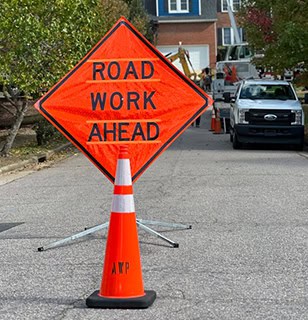
Color
The color of roll-up signs is carefully chosen to maximize visibility and convey specific messages. Vibrant hues such as fluorescent orange, lime green, pink, and bright yellow are commonly utilized to ensure high contrast and visibility, especially in traffic control and construction settings. The choice of color is also influenced by industry standards and regulations, ensuring that the signs meet specific visibility requirements and communicate messages clearly to drivers, pedestrians, and workers in various environments.
Shape
In terms of shape, roll-up signs are often designed with standard shapes such as rectangles, diamonds, circles, or octagons to convey specific meanings and comply with industry standards. For instance, the octagonal shape is commonly associated with stop signs, while the diamond shape is used for warning signs. These standardized shapes help drivers and pedestrians quickly recognize the meaning of the sign, contributing to enhanced safety and clear communication on the road and in other settings.
Size
The size of roll-up signs varies based on their intended use and visibility requirements. Larger signs are often employed in highway construction zones, where they need to be visible from a distance and provide ample warning to approaching drivers. Smaller signs are suitable for temporary roadwork, event management, and pedestrian safety applications. The size of the sign is carefully considered to ensure that it meets regulatory standards for visibility and conveys messages effectively in different environments.
Where are Roll Up Signs Commonly Used?
1. They are commonly used in construction zones to warn motorists of significant roadwork, traffic detours, and other potential hazards. These signs are essential for ensuring the safety of both workers and drivers in areas undergoing construction or maintenance activities.
2. Traffic control situations often utilize them due to their flexibility, minimal weight, and portability, allowing for quick setup and takedown. These signs are crucial for effectively managing traffic flow, providing warnings, and conveying important information to drivers in various temporary traffic control scenarios.
 3. Event management frequently employs them for crowd control, pedestrian safety, and to convey specific messages to event attendees. The portability and visibility of these signs make them valuable tools for ensuring smooth and safe event operations.
3. Event management frequently employs them for crowd control, pedestrian safety, and to convey specific messages to event attendees. The portability and visibility of these signs make them valuable tools for ensuring smooth and safe event operations.
4. Incident management situations, such as temporary traffic control, construction zones, and road closures, often utilize these signs to warn drivers of upcoming road conditions that may require them to stop or exercise caution. These signs are crucial for alerting drivers to potential hazards and changes in road conditions.
5. Emergency response scenarios benefit from them, particularly those designed for high visibility and quick deployment. These signs play a vital role in guiding emergency responders, managing traffic during crises, and ensuring clear communication in rapidly changing environments.
6. Work zones rely on them to provide clear and visible warnings to drivers about ongoing roadwork, lane closures, and potential hazards. The high-visibility and portability of these signs make them essential for maintaining safety in work zone environments.
7. Temporary road closures and detours often utilize them to communicate changes in traffic patterns, provide guidance to drivers, and ensure the safety of both motorists and pedestrians. These signs are crucial for maintaining order and safety during temporary disruptions to regular traffic flow.
Popular Roll Up Signs Legends
1. Be Prepared to Stop
2. Flagger Ahead
3. Flagger Symbol
4. Men Working
5. One Lane Road Ahead
6. Right Lane Closed
7. Right Lane Closed Ahead
8. Road Closed Ahead
9. Road Work Ahead
10. Utility Work Ahead
11. Worker Symbol
These Legends are frequently used to convey important messages to drivers and pedestrians in various traffic control, construction, and emergency response scenarios. The selection of legends is designed to ensure clear communication and enhance safety in diverse environments.
Different Types of Roll Up Sign Stands
1. Tripod Sign Stand: The tripod sign stand is a popular choice. It features three telescoping legs that provide stability and easy setup on various terrains. The adjustable height and compact design make it a versatile option for temporary traffic control, construction zones, and event management. Bags of sand are also used to weight these signs down in windy conditions.
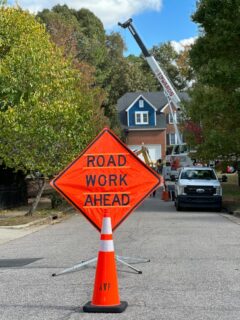 2. Spring Sign Stand: Spring sign stands utilize a heavy-duty spring system to provide flexibility and stability in windy conditions. These stands are designed to minimize the risk of tipping over and may accommodate roll-up signs of different sizes. The spring mechanism allows the sign to sway with the wind, reducing the strain on the stand and ensuring continuous visibility. See note on sandbags in #1 above.
2. Spring Sign Stand: Spring sign stands utilize a heavy-duty spring system to provide flexibility and stability in windy conditions. These stands are designed to minimize the risk of tipping over and may accommodate roll-up signs of different sizes. The spring mechanism allows the sign to sway with the wind, reducing the strain on the stand and ensuring continuous visibility. See note on sandbags in #1 above.
3. Portable Sign Stand: Portable sign stands are lightweight and easy to transport, making them ideal for quick deployment in various settings. These stands often feature a folding design for compact storage and are suitable for event management, temporary road closures, and pedestrian safety applications.
4. Compact Sign Stand: Compact sign stands are designed for space-efficient storage and transportation. These stands offer stability and support for roll-up signs while minimizing the footprint, making them suitable for applications where space is limited, such as narrow roadways, work zones, and urban environments.
5. Wind-Deflecting Sign Stand: Wind-deflecting sign stands are specifically engineered to reduce the impact of strong winds on roll-up signs. These stands often feature aerodynamic designs and materials that help mitigate the effects of wind, ensuring that the sign remains visible and stable in challenging weather conditions. See note on sandbags in #1 above.
Each type stand is tailored to specific requirements, offering stability, portability, and resistance to environmental factors. The choice of stand depends on the intended use, environmental conditions, and the size and type of roll-up signage being deployed.
Do Roll Up Signs Need to Comply to MUTCD Standards?
Yes, they are required to comply with the standards set forth by the Manual on Uniform Traffic Control Devices (MUTCD). The MUTCD provides guidelines and regulations for the design, placement, and usage of traffic control devices, including roll-up signs, to ensure consistency and safety on roadways.
Compliance with MUTCD standards is essential to ensure that roll-up signs effectively communicate messages to drivers, pedestrians, and workers, as well as to maintain uniformity in traffic control practices. Adhering to MUTCD standards also helps to minimize confusion, enhance visibility, and promote safe and efficient traffic flow in various settings, making it imperative for roll-up signs to meet these regulatory requirements.
Advantages of Roll Up Signs
1. Portability: They are constructed from lightweight materials, such as mesh, facilitating easy transportation and storage. This portability allows for swift deployment and relocation as needed, enhancing flexibility and adaptability in dynamic work environments.
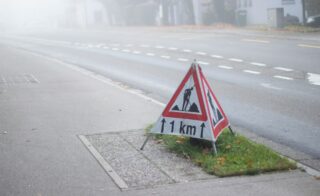 2. Ease of Installation: The quick and straightforward installation and disassembly of these signs require minimal effort and time, allowing for efficient deployment and adjustment in various traffic control and construction settings.
2. Ease of Installation: The quick and straightforward installation and disassembly of these signs require minimal effort and time, allowing for efficient deployment and adjustment in various traffic control and construction settings.
3. High Visibility: They feature high-visibility markers that effectively warn motorists of traffic conditions, contributing to enhanced safety for both drivers and workers. This visibility is crucial for ensuring that important messages are conveyed clearly and effectively to road users.
4. Space Efficiency: Their compact nature facilitates improved storage and transportation, making them an ideal solution for teams that require traffic signals but drive smaller pickup trucks. This space efficiency is advantageous for maintaining an organized and easily accessible inventory of traffic control equipment.
How Durable are Roll Up Signs?
They are known for their durability, designed to withstand the rigors of outdoor use and adverse weather conditions. Made from resilient materials such as vinyl, mesh, or other durable fabrics, these signs are engineered to resist tearing, fading, and damage from prolonged exposure to sunlight, wind, rain, and snow. The robust construction of roll-up signs ensures that they maintain their visibility and integrity over extended periods, making them well-suited for long-term deployment in construction zones, work areas, and temporary traffic control applications.
Also, many of these signs are equipped with reinforced corner pockets and sturdy support systems, further enhancing their durability and stability in various environmental conditions. Their durability makes them a reliable and cost-effective solution for promoting safety and communication on roadways and work sites.
Conclusion
Roll-up signs stand as a testament to innovation and practicality in the realm of traffic control and construction safety. Their lightweight yet durable construction, portability, ease of installation, high visibility, and space efficiency make them a versatile and indispensable tool for a wide range of applications. Whether deployed in construction zones, work areas, or temporary traffic control settings, they offer a reliable means of conveying crucial information to motorists while ensuring the safety of workers and pedestrians. Their ability to withstand the elements and maintain visibility over extended periods underscores their value as a cost-effective and long-term solution. In essence, they represent a harmonious blend of durability, functionality, and convenience, making them an essential component of modern traffic management and safety initiatives.
Popular Posts:

